Judi Lynn
Judi Lynn's JournalEarlier info. on El Salvador's Bitcoin Presidente: The Donald Trump of Central America

US Secretary of State Michael R. Pompeo shakes hands with Salvadoran President Nayib Bukele during a joint press availability in San Salvador, El Salvador on July 21, 2019. (Ron Przysucha / Wikimedia Commons)
The Donald Trump of Central America
BY
HILARY GOODFRIEND
President Nayib Bukele is El Salvador’s Donald Trump. His hard-right bluster and media-centric populism threaten to deal a devastating blow to the country’s once-mighty left.
El Salvador’s new president, Nayib Bukele, has only been in office since June, but already he has the world’s attention. Deemed a “millennial president” in the international press for his social media savvy and aversion to neckties, Bukele’s term kicked off a dizzying parade of scandal and spectacle that is already drawing Trump comparisons.
A 38-year-old millionaire of Palestinian descent with a background in advertising, Bukele’s election unseated the party of the former leftist guerrillas, the Farabundo Martí National Liberation Front (FMLN), who fought the US-backed military dictatorship to a draw during a twelve-year civil war (1980–1992). The FMLN governed El Salvador from 2009–2019, ousting the right-wing Nationalist Republican Alliance (ARENA) party, which had ruled the country for twenty years. While the FMLN oversaw major gains in social investment and inclusion, it failed to restructure the country’s highly dependent, unequal, dollarized economy, and was successively weakened over its two terms by pragmatism and compromise amid escalating right-wing destabilization and a deteriorating geopolitical climate.
Bukele, a former FMLN mayor, was expelled from the party in 2017 for ethics violations. He ran an insurgent presidential campaign with the conservative GANA party — which splintered from ARENA in 2010 — framing himself, savior-like, against a corrupt political class. In his inauguration speech, Bukele claimed to have “turned the page” on El Salvador’s postwar period. Unfortunately, his personal brand of post-ideological populism has revealed an all too familiar reactionary agenda.
The administration’s first few months have been marked by improvisation, with signature FMLN programs like the Women’s City service centers in an uncertain limbo. But while Bukele appears to favor publicity over policy, some disturbing tendencies are emerging.
More:
https://jacobin.com/2019/07/el-salvador-nayib-bukele-donald-trump
UPDATE 1-World Bank approves $100 mln loan for El Salvador water projects
Reuters
Thu, April 27, 2023 at 8:16 PM CDT·1 min read
(Adds detail from statement)
SAN SALVADOR, April 27 (Reuters) - The World Bank approved a $100 million loan to El Salvador to help the Central American country improve the reliability and quality of its water supplies as well as prepare for natural disasters, the lender said in a statement on Thursday. The loan will mature in 25 years and include a five-year grace period, according to the statement.
"It's key for our country to promote the rational use of water so as not to compromise or jeopardize its availability for future generations," said Finance Minister Alejandro Zelaya.
The financing assistance aims to modernize the country's water and sewage services, and cover the metropolitan area of the capital that receives water from the Torogoz treatment plant. The plant supplies water to some 40% of the people living in San Salvador's metro area, the lender said.
The loan is also set to create an immediate response plan for a natural or human-caused emergency.
More:
https://finance.yahoo.com/news/1-world-bank-approves-100-011655948.html
~ ~ ~


Guatemala Needs Peace And Justice - OpEd

April 27, 2023
By IDN
By Jonathan Power*
Twenty years after 200,000 unnecessary deaths, 40,000 “disappearances” and 440 decimated villages, peace formally came to the last redoubt of the Central American war zone, Guatemala, in 1996. Put it up there with Rwanda, Cambodia, ex-Yugoslavia and today, the Congo as one of the great killing fields of the “post-war” world.
The violence never reached the crescendo it did in neighbouring El Salvador, nor did as many people just “disappear” as happened in Chile and Argentina, nor did the war stretch on and on as long as in Peru and Colombia, but no country in Latin America came near Guatemala for long-term systematic assassination and torture.
Before my first trip to this heart-torn country in 1980 I went for a briefing in London from the secretary-general of Amnesty International. I had asked him to point me in the direction of the worst country on their books and Guatemala it was. “How many political prisoners do you have there?” I asked him. “None”, he replied, “Only political killings.”
On that first visit I broke the story in the International Herald Tribune and the New York Times that the death squads were not ad hoc groups of off duty soldiers and private bodyguards of big landlords resisting peasant revolts, as was the common excuse, but were organized and directed from the presidential office. But there was an overpowering silence from official Washington where Ronald Regan was the new Teflon president.
More:
https://www.eurasiareview.com/27042023-guatemala-needs-peace-and-justice-oped/
COMMENTARY: THE US NEEDS TO CHILL OUT ABOUT LULA
US meddling in Latin America has contributed to Brazil’s alignment with China and Russia.
Brazil’s President Luiz Inacio Lula da Silva raised eyebrows in recent weeks thanks to his overtures to China and Russia, seemingly repudiating the United States.
On his recent visit to Beijing, Lula stated his wish to help “balance world politics” by “[raising] the level of strategic partnership” and “[expanding] trade flows” between China and Brazil while calling on developing countries to end their dependence on the US dollar for international trade settlements. Lula also hosted Russian Foreign Minister Sergei Lavrov in Brasilia and blamed the United States for fueling the Russo-Ukrainian war rather than seeking peace. Brazil and Argentina, South America’s two largest economies, have also begun preparations for a common currency to which other Latin American countries would be invited, consistent with Lula’s longstanding aspiration toward greater regional integration. What is Lula up to?
LOOKING EAST, NOT NORTH
The response from the United States has been predictably condemnatory, with Washington accusing Brazil of “parroting Chinese and Russian propaganda.” Yet, while Washington has yet to abandon the “with us or against us” posture it has become accustomed to, Beijing has recently been riding a wave of major diplomatic achievements, showing that it is open for business to the long list of states spurned by the West.
It’s unsurprising, therefore, that Latin American states should increasingly look to China for partnership. The United States has a long and dark history of backing right-wing coups and dictatorships in Latin America while opposing left-wing governments. Brazil has been no exception. In 1964, the US supported the overthrow of President Joao Goulart by a coup which installed a military dictatorship for the next two decades. During this period, Lula emerged as a major dissident figure at the head of the Workers’ Party, which played a significant role in Brazil’s transition to democracy.
But Lula has even more recent and personal reasons to be suspicious of the United States. Leaks reported by The Intercept in 2020 show that the United States was deeply involved in the controversial anti-corruption drive “Operation Car Wash,” which helped bring down Lula’s successor Dilma Rousseff, and led to Lula being sent to prison prior to the 2018 election which he was overwhelmingly expected to win. Lula’s imprisonment brought to power right-wing President Jair Bolsonaro, who openly eulogized the military dictatorship and even celebrated the colonel responsible for Rousseff’s past torture while deepening bilateral ties between Brazil and the United States under President Donald Trump.
Evidence was later leaked which questioned the impartiality and political motivations of Operation Car Wash, and Lula’s conviction was overturned. Lula again ran and won the election of 2022, after which Bolsonaro immediately decamped for Florida while his supporters attacked the capitol, leading many to draw comparisons with the events of Jan. 6, 2021, in the United States, and creating the impression that the United States was providing Bolsonaro with sanctuary.
More:
https://inkstickmedia.com/the-us-needs-to-chill-out-about-lula/
The Climate Crisis Is Also a Subjectivity Crisis, Says Indigenous Artist Gustavo Caboco
Caboco, a star in Brazils latest Art Biennial, denounces colonial heritage that excludes Indigenous peoples
Apr.25.2023 1:08PM
Cristiane Fontes
OXFORD
For Gustavo Caboco Wapichana, the so-called climate crisis is, in fact, a generalisation for a range of different relationships that we have with the world. According to him, it could be understood as a consequence of our colonial history, with impacts on our identities and on how we exercise our subjectivities.
Caboco is a multi-artist. He introduces himself as someone born in Curitiba-Roraima — drawing our attention not only to his place of birth, the state capital of Paraná, but also to the territory of his people and families, the Canauanim Indigenous Land, in Cantá (25 km from Boa Vista). His work challenges the historical context that led his own family into forced displacement.
Through his drawings, paintings, embroideries, animations, texts, and performances, Caboco externalises his reflections on how his mother was kidnapped by a missionary in 1968, among other topics. He seeks to strengthen the memories of Indigenous peoples, as well as their multiple histories and stories, their ways of life, and their resistance — which are all still present across the country, and not only in the Amazon.
'When we talk about coloniality, people think about the 1500s, as if it were not happening now — both in current State-led mechanisms and in our education, based on the exclusion of Indigenous peoples', he says. Gustavo adopted Caboco as his last name because it is part of his affective memory, but also as a provocation.
More:
https://www1.folha.uol.com.br/internacional/en/scienceandhealth/2023/04/the-climate-crisis-is-also-a-subjectivity-crisis-says-indigenous-artist-gustavo-caboco.shtml





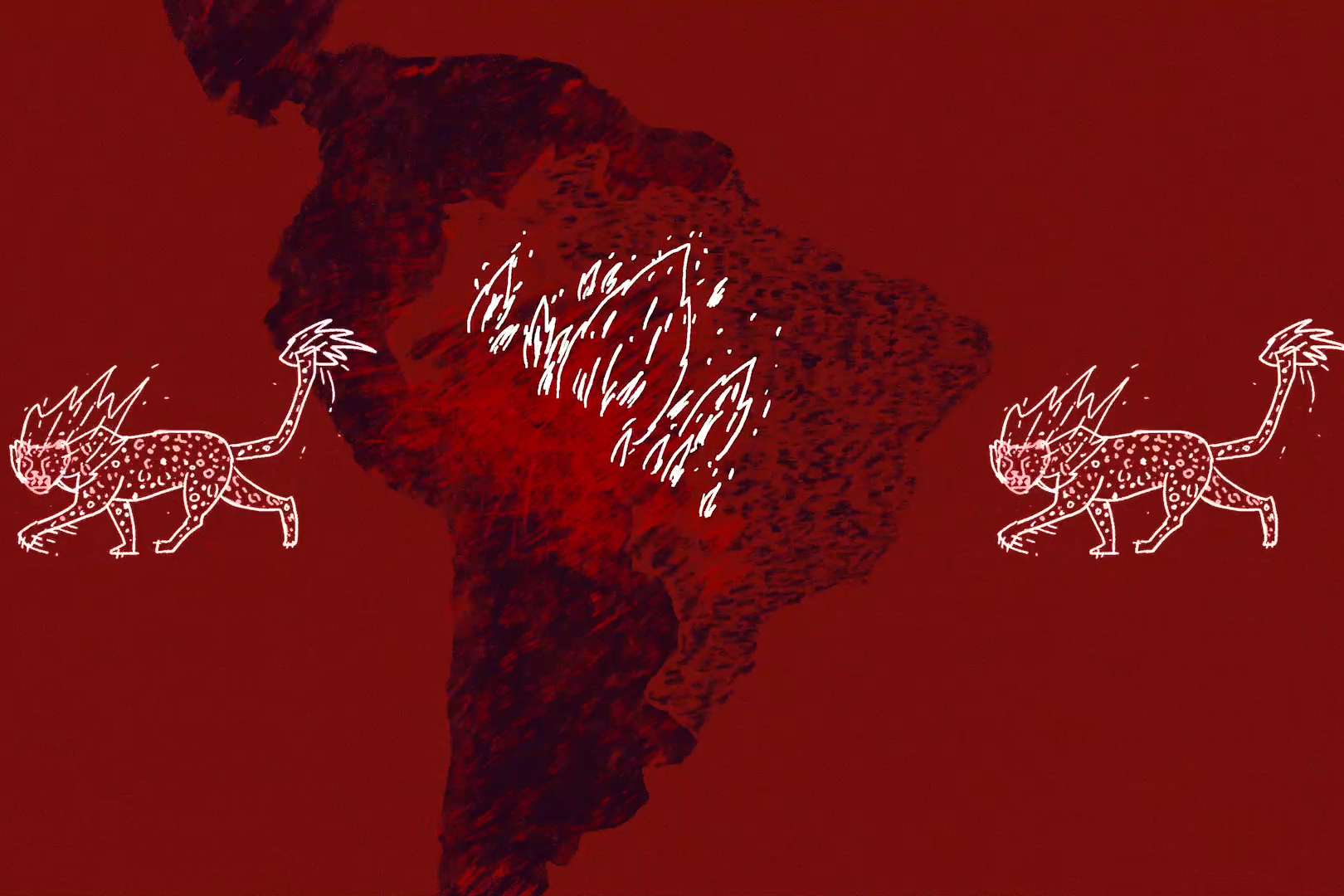





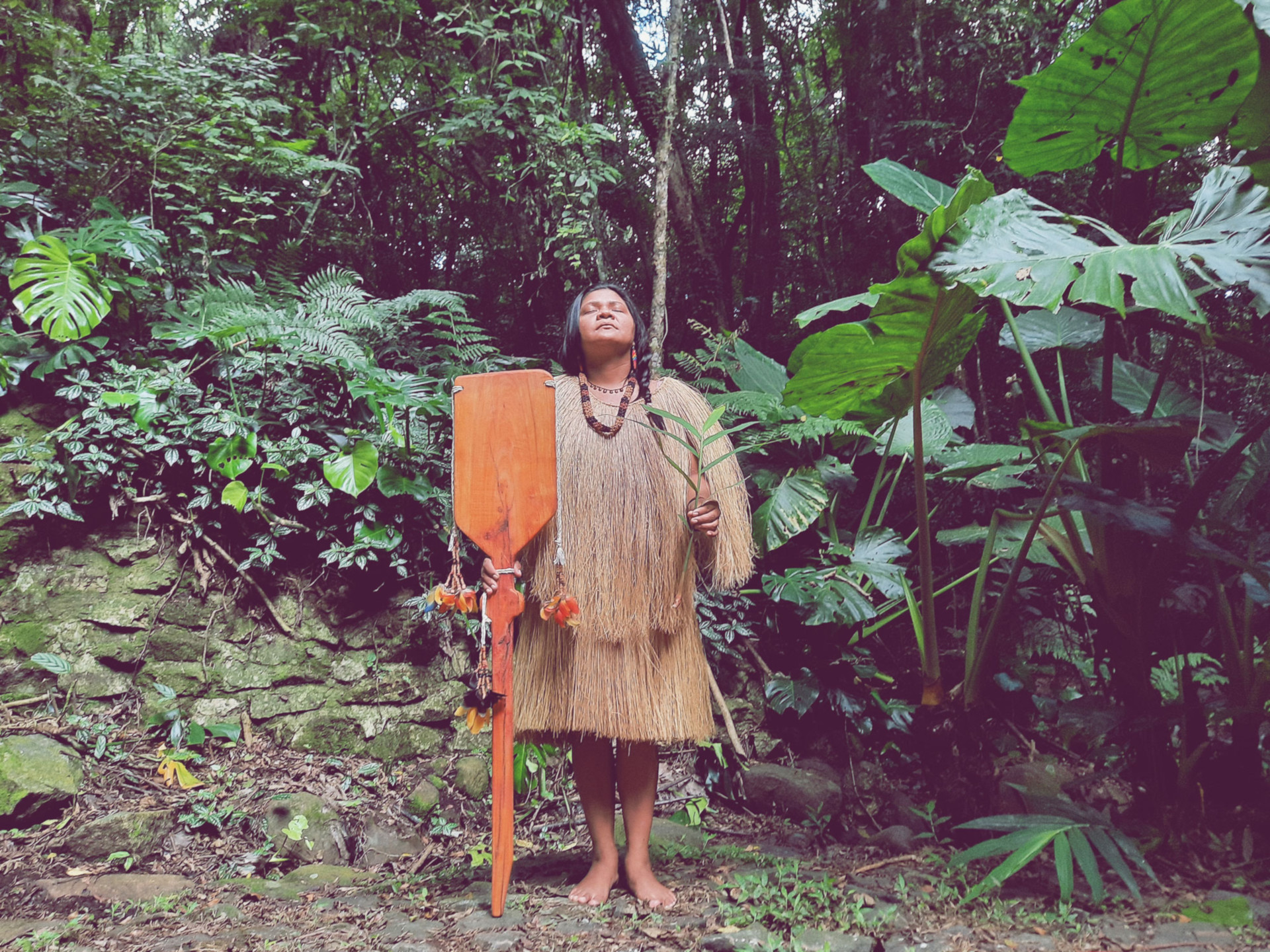
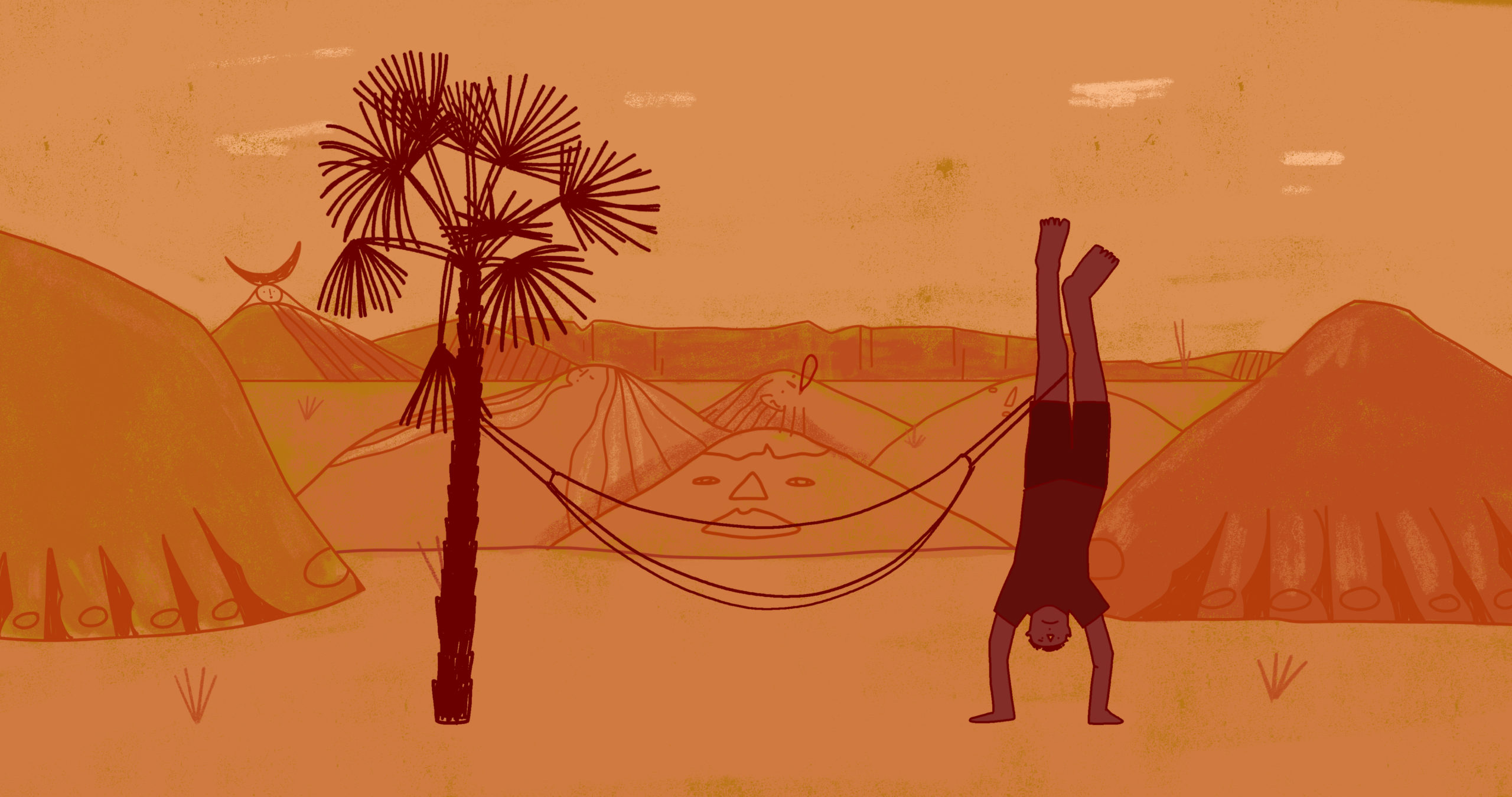


Panaras, 'Giant Indians', Grow Again 50 Years after Contact
Reinstalled in their original land from 25 years ago, the group sees its population increase, but suffers pressure from invaders
Apr.24.2023 12:22PM
When they returned to their region of origin, in the Peixoto de Azevedo river basin, 25 years ago, the Panarás put an end to a tragedy that had lasted another 25 years: even before they found the contact front led by the Villas-Bôas brothers, in February 1973, "everybody" was already dying, as the chief Akë (pronounced Akã) tells us.
In the beginning, they were called "krenhakarore", always associated with the description "giant Indians". The fame of their supposedly beyond-average height, faded a little after contact, traveled the world between the late 1960s and early 1970s, provoking a global interest like few things in Brazil, apart from football, could reach at that time.

Panarás, 'giant Indians', grow again after almost disappearing. Credit: Fred Mauro
The Panará indigenous people managed to return to their homeland after decades of forced exile. Today they have reached a larger population than the one they had before being almost decimated by the diseases and mistreatment resulting from the contact determined by the military dictatorship, to tear up a road in the territory they occupied in the early 1970s.
Exactly 50 years after the meeting with Brazilian State officials, they are now going through a happy phase, of food comfort and population growth.
Even so, they are scared and have to permanently protect themselves against the risk of invasions, arson and the influence of agribusiness on their territory —in the form of a drying environment, water pollution and contamination of animals by pesticides.
https://www1.folha.uol.com.br/internacional/en/scienceandhealth/2023/04/panaras-giant-indians-grow-again-50-years-after-contact.shtml
~ ~ ~
Quick history source:
Despite the trauma of contact with Brazilian society in 1973, the white men’s diseases that almost decimated them, and twenty years of forced dislocation from their traditional lands of Peixoto de Azevedo River to the Parque Indígena do Xingu, the Panará have been able to recover their joy and desire to fight. They are once again growing in numbers and proud of their way of life. They were also able to take back part of their ancient traditional territory along the Iriri River (495,000 hectares of dense forest and headwaters, unspoiled by the white man) located on the border of Mato Grosso and Pará states. Nowadays, they want to be known by their real name: Panará.
[Extracted from Panará: a volta dos índios gigantes, book by Ricardo Arnt, Lúcio Flávio Pinto, Raimundo Pinto and Pedro Martinelli. São Paulo: ISA, 1998]
Who are the Panará?
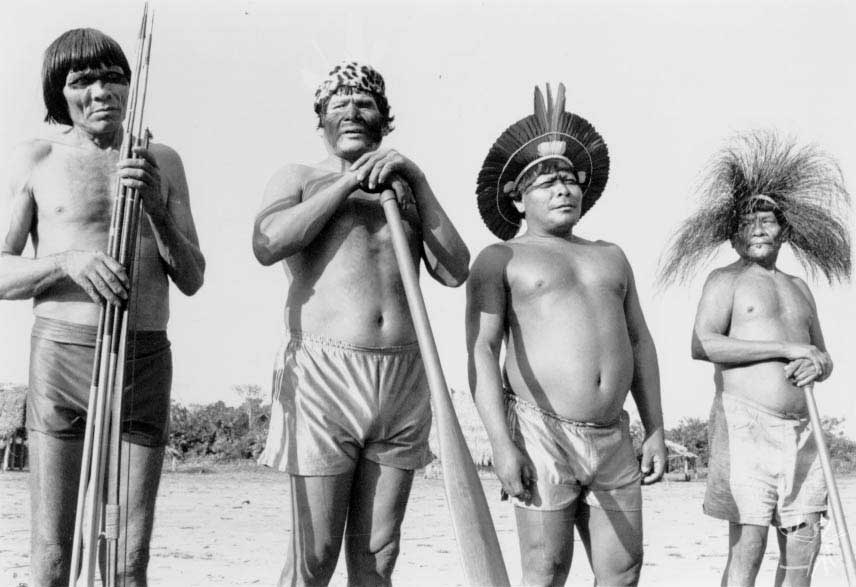
The Panará are the last descendants of the Southern Cayapó, a large group that dwelled over a vast area in central Brazil in the 18th century. Their territory stretched from the northern part of São Paulo state, Triângulo Mineiro and the southern portion of Goiás state to eastern part of Mato Grosso state and eastern and southeastern Mato Grosso do Sul state. The Southern Cayapó were known for their “ferocity” because they took no prisoners in battle.
The intensification of mineral exploration during the 18th century increased the trade flows between the states of São Paulo and Goiás, right in the middle of their land. Realizing the potential problems this would cause, the administrations of both provinces hired frontiersmen to drive the Indians away from the travelers’ and miners’ routes. Likewise, when Bartolomeu Bueno da Silva discovered gold in the Vermelho river region in Goiás in 1772, the Southern Cayapó began to encounter non-stop conflicts along this ever-expanding frontier.
The conflicts between the Southern Cayapó and the Portuguese settlers in the Goiás region were numerous and bloody. In the first skirmishes, according to a chronicler of the time, one thousand Cayapó were captured during a three-month campaign. A different investigator calculates that another 8,000 were enslaved in these first wars. Following the second half of the 18th century, the bandeiras (early exploratory expeditions) that had organized raids against the Cayapó veered from their initial purpose of enslaving the Indians to killing all men who could take up arms. By the end, the war against the Cayapó consisted of slaughter and compulsory living under the white man’s rule.
In the 19th century the occupation of the lands southwest of Goiás compounded the conflicts with the Indians and drove the Cayapó population to near extinction, with only a few groups remaining in the Triângulo Mineiro. The Southern Cayapó were considered extinct by the first few decades of the 20th century. The Panará who did not submit to the white man’s rule and assimilation in the 18th and 19th centuries fled west and north, deep into the woods of northern Mato Grosso. What is known from ethno-history is that by the beginning of the 20th century, the present Panará came to the Peixoto de Azevedo watershed, a right-bank tributary to the Teles Pires River that is one of the feeders of the Tapajós River. The natural wealth of the region contributed towards their settling down in this location.
The Panará’s oral tradition has it that they came from the East, from a savanna region, inhabited by extremely wild and ferocious white men who had fire weapons and who fought tirelessly to kill off many Panará ancestors. According to chieftain Akè Panará, "The elders told us that, long ago, the whites killed many Panará with their rifles. They came to our villages and killed many. ‘If they ever come here,’ they said, ‘kill them dead with your war clubs, for they are vicious.’"
More:
https://tinyurl.com/4x9v7bau
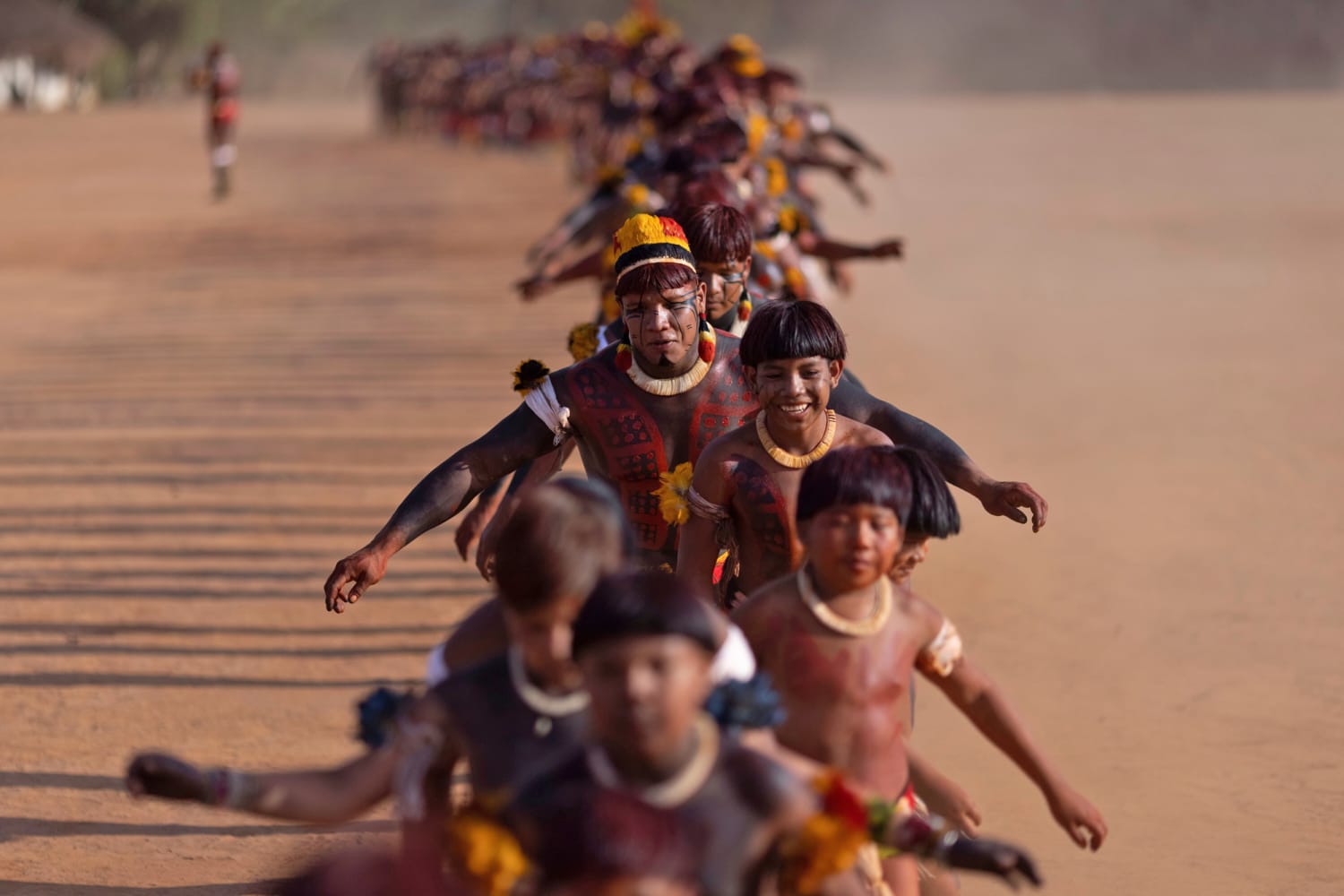

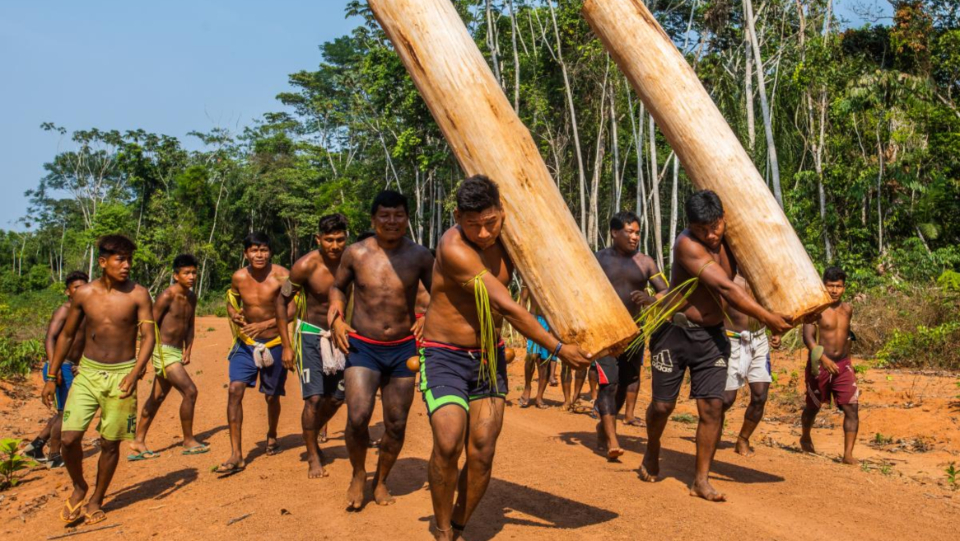







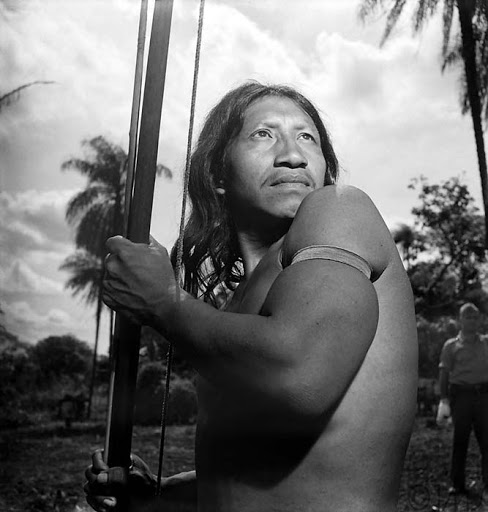
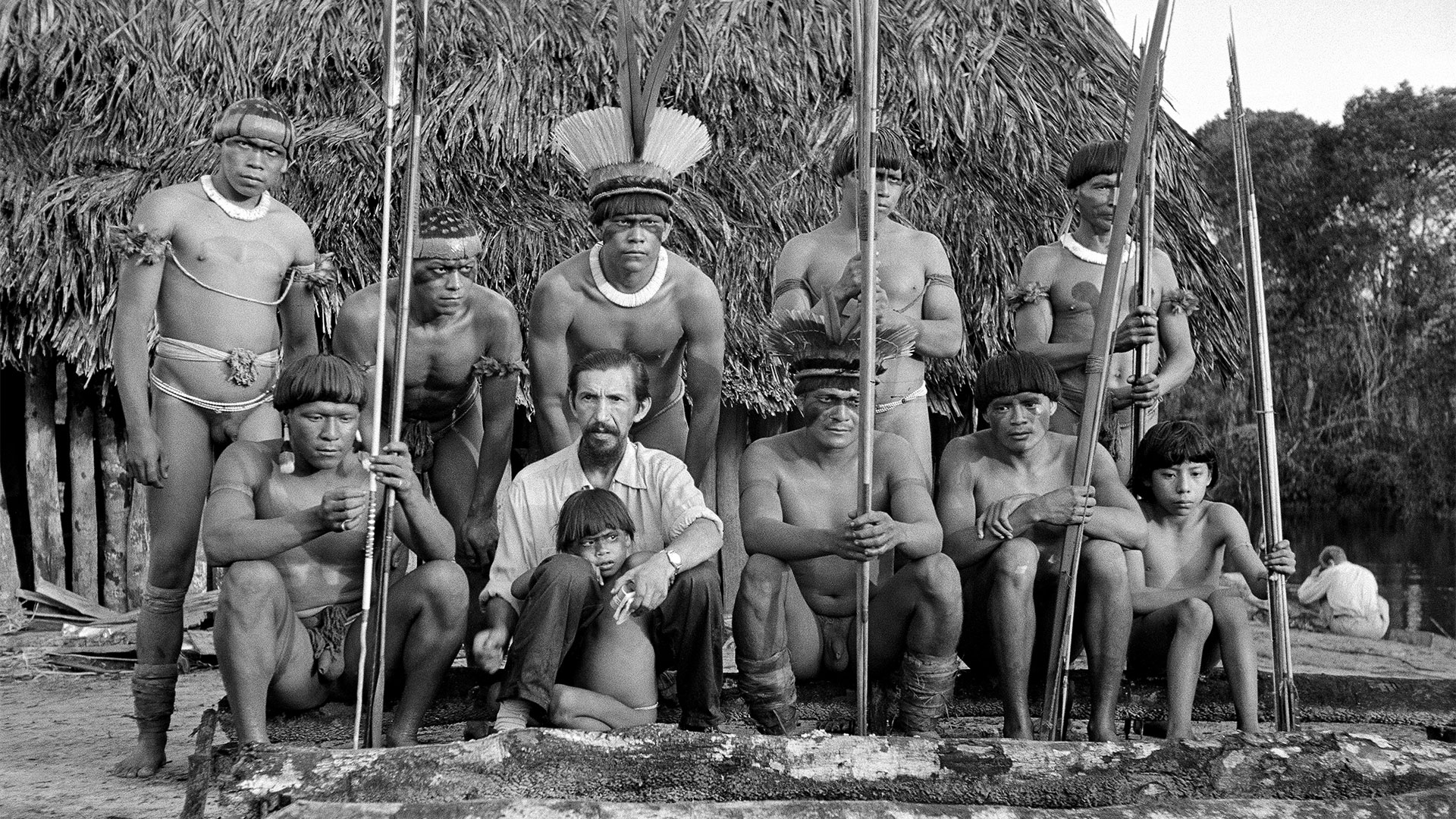
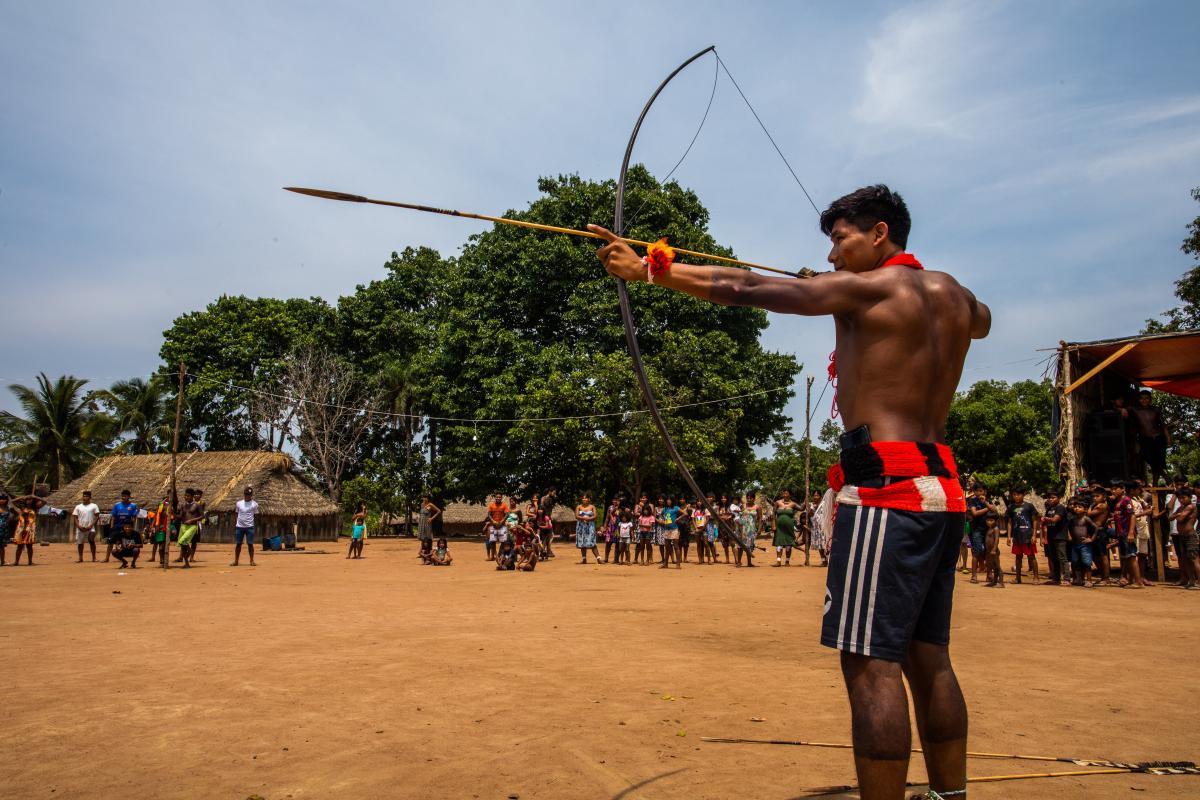
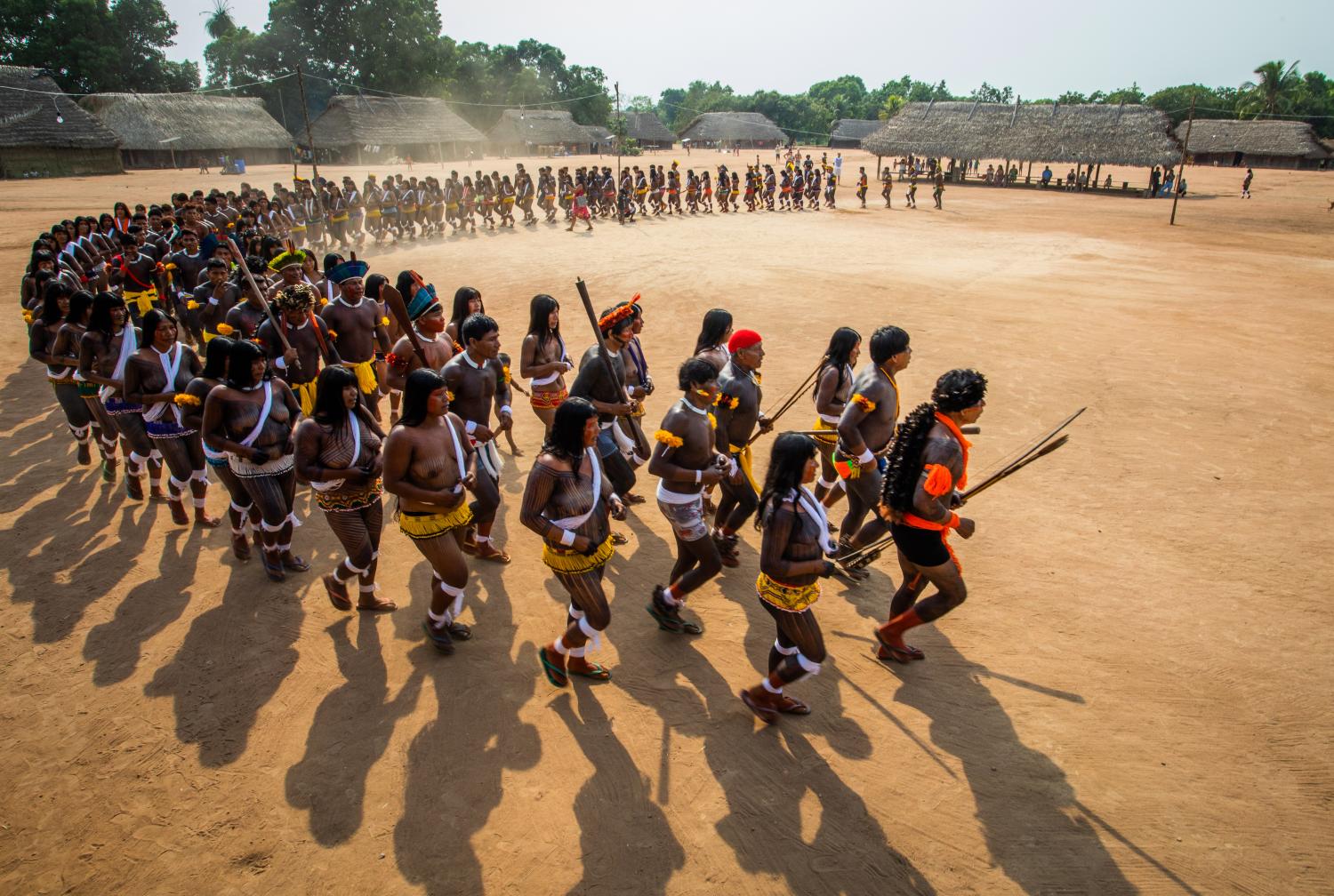

Caribbean leaders agree on plan to ban assault-style weapons
By Associated Press
April 19, 2023 at 2:56 p.m. EDT
GEORGETOWN, Guyana — Caribbean Community leaders have agreed on plans to introduce bans in their countries on assault-style weapons mostly manufactured in the U.S. to curb spikes in gun violence and weapons smuggling in the 15-nation Caricom bloc.
. . .
The Caribbean leaders had called a roundtable on the issue amid complaints from several governments about an increase in gangland violence, bolstered by the availability of high-powered, military-style weapons smuggled mostly from the U.S.
. . .
“Caricom heads have agreed today to take a decision to ban the use and presence of assault weapons in the civilian population of our nations,” host Prime Minister Keith Rowley told reporters at the end of the summit, attended by a majority of heads of government.
The move came just a few weeks after several member nations announced plans to join with Mexico to sue American gun manufacturers over the weapons smuggled into their countries.
More:
https://www.washingtonpost.com/world/2023/04/19/caribbean-assault-weapon-ban-caricom-rowley/f531ccbe-dee3-11ed-a78e-9a7c2418b00c_story.html
Or:
https://archive.ph/GKaNa
MUSA Underwater Museum of Art in Cancun: Dive Into Art in Isla Mujeres, Mexico

In the beautiful waters of Isla Mujeres, Mexico, an underwater museum was built nine years ago in an effort to create a sustainable reef-like structure for ocean life. When I saw the MUSA online, I decided I had to dive it.
Once I was underwater, the sculptures were more breathtaking than I had even imagined. Our path first took us to a man working at a desk, complete with a desk phone, paperwork and a friendly-looking dog sitting at his feet. Each detail was perfect on the life-size objects. Next, we swam past a sculpture of an original VW bus and then on to what was the piece de resistance – a collection of 450 life-size sculptures of humans.
Approaching the exhibit I was taken aback by the volume of statues occupying the 420-square-meter area. Moving closer, the detail on each face brought them to life. There was emotion visible in their expressions and features. It was breathtaking.
Beautiful pink and purple corals had taken root on the statues' bodies and faces, enhancing the effect of the statues standing together, as if they were migrating to another place. Each statue was modeled after a real person the artist had pose for him. After swimming among the statues, it is truly remarkable how he captured their essence.
More:
https://30seconds.com/travel/tip/17450/MUSA-Underwater-Museum-of-Art-in-Cancun-Dive-Into-Art-in-Isla-Mujeres-Mexico
Lyrics of an amazing song translated to English:
It took me 12 years to "discover" this song, but, I'm glad I didn't miss it all together.
Here's its Wikipedia history:
"Latinoamérica" is a song by Puerto Rican alternative hip hop band Calle 13. It was released on September 27, 2011 as the fifth single from their fourth studio album, Entren Los Que Quieran (2010). It was written and produced by Rafael Arcaute and Calle 13, and features additional vocals from other Latinoamerican recording artists. These artists include Peruvian Susana Baca, Colombian Totó la Momposina and Brazilian Maria Rita. The song won Record of the Year and Song of the Year in the Latin Grammy Awards of 2011. The song is important in that it touches on many underlying historical, social, and political themes present throughout Latin America.[1]
Background
Calle 13 is well known for their creation of music with strong themes and agendas, particularly music focused on social consciousness. The band has also released a documentary, Sin Mapa. Sin Mapa follows the evolution of Calle 13 as its two main members, stepbrothers Residente (René Pérez Joglar) and Visitante (Eduardo José Cabra Martínez), travel across Latin America. Sin Mapa presents many of the same issues highlighted in "Latinoamérica". "Latinoamérica"'s reflection on historical, social, and political themes acts as a criticism of Western force and influence within Latin America, while at the same time asserting the collective strength of the Latin American oppressed. In addressing the shared history of Latin America, the band exposes the faults that are still a factor in present-day Latin America. It was produced by Peruvian production company Patria[2]
Music video
The music video for Latinoamérica was filmed in March, over the course of twenty-one days, in Perú.[3] It was directed by Jorge Carmona and Milovan Radovic. In addition to the new footage shot throughout Latin America, the music video incorporates previously unused footage shot by the brothers from their pivotal trip captured in Sin Mapa. The video opens to a striking landscape of Peruvian mountains, as the silhouettes of Residente and Visitante are seen crossing the frame.
The stepbrothers make their way up dirt roads, to a radio station in the Peruvian mountains, where they are presented to a Quechua-speaking DJ.
As the video continues, additional symbolism becomes apparent. The start of the song’s instrumental music contains percussion reminiscent of the sound of heartbeats. The audio image of heartbeats is then synchronized to a large visual image of a beating heart.
In the remainder of "Latinoamérica"'s music video there is a wide variety of interesting symbols that play off the song’s lyrics. Nevertheless, for the most part these symbols ultimately tie back to the themes of unity and knowledge.[4]
More:
https://en.wikipedia.org/wiki/Latinoam%C3%A9rica_(song)#
Latinoamérica by Calle 13 – English Lyrics
View Latinoamérica Music Video
Radio Announcer:
“Good morning to the beloved listeners of your radio IntiRaymi.
How are you? Are you ok? And, how is everyone in this town of Cuzco? Either way, to everyone outside this town, every person listening, brothers and sisters. Now, I introduce you to the young boys that sing well, they come from the land of Puerto Rico; they are called CALLE 13 and they are bringing us good music. The name of the song is LATINOAMÉRICA (Latin America), Let’s listen…”
Song Lyrics:
I am,
I am what they left behind,
I am the leftovers of what they’ve stolen.
A hidden town in the summit,
My skin is of leather that’s why it withstands any weather.
I am a smoke factory,
Peasant labour for your consumption
Cold front in the middle of summer,
Love in the time of cholera, my brother!
I’m the sun that rises and the day that dies,
with the best sunsets.
I am the development in raw flesh,
a political speech without saliva.
The most beautiful faces I have ever met,
I am the picture of a missing person.
I am the blood in your veins,
I am a piece of land which is worthy
I am a basket with beans,
I am Maradona against England scoring two goals.
I am what supports my flag,
The planet’s spine is my mountain range.
I am what my father taught me,
Whoever doesn’t love their country doesn’t love their mother.
I am Latin America,
A nation without legs but still walking.
You can’t buy the wind.
You can’t buy the sun.
You can’t buy the rain.
You can’t buy the heat.
You can’t buy the clouds.
You can’t buy the colours.
You can’t buy my happiness.
You can’t buy my pain.
I have lakes, I have rivers.
I have my teeth for when I smile.
The snow coating my mountains.
I have the sun which dries me and the rain which bathes me.
A dessert drunk on peyote and a drink of pulque to sing with the coyotes. Everything I need.
My lungs breath clean air.
The suffocating altitude.
I am the molars of my mouth chewing coca.
The autumn with its fainting leaves.
The verses written under a starlight night.
A vineyard full of grapes.
A cane plantation under the sun of Cuba.
I am the Caribbean Sea looking after the little houses,
Performing rituals with blessed water.
The wind that combs my hair.
I am all the saints that hang from my neck.
My fight is not fruitless,
Because the manure of my land is natural.
You can’t buy the wind.
You can’t buy the sun.
You can’t buy the rain.
You can’t buy the heat.
You can’t buy the clouds.
You can’t buy the colours.
You can’t buy my happiness.
You can’t buy my pain.
You can’t buy the wind
You can’t buy the sun
You can’t buy the rain
You can’t buy the heat
You can’t buy the clouds
You can’t buy the colours
You can’t buy my happiness
You can’t buy my pain
You can’t buy my happiness
You can’t buy my sadness
You can’t buy the sun.
You can’t buy the rain.
(We draw the path, we walk)
You can’t buy my life.
MY LAND IS NOT FOR SALE.
I work hard but with pride.
Here we share, what’s mine is yours.
This nation doesn’t drown with the waves.
And if it collapses I rebuild it.
I don’t even blink when I look at you,
So you’ll remember my last name.
Operation Condor invading my nest,
I forgive but never forget!
(We walk)
Here struggle is perceived.
(We walk)
I sing to be listened.
Here we stand
Long live Latin America!
Maya beekeepers blame Bayer-Monsanto for deaths of 30,000 bees
by Mexico News Daily
Friday 31 March, 20232 mins read
![]()
Beekeepers in Campeche are blaming agrochemical testing linked to Bayer-Monsanto for the deaths of more than 300,000 bees in their apiaries.
The mass bee death affected around 100 apiaries and up to 2,500 hives in San Francisco Suctuc and Crucero Oxá, in the municipality of Hopelchén. Beekeepers report combined economic losses of up to 12 million pesos (US $663,000).
The cause of the incident is unconfirmed until laboratory tests are concluded. But some farmers allege it is linked to aerial fumigation of corn, sorghum and soy crops at the Zenit ranch near Crucero Oxá, which they say is operated by agrochemical giant Bayer-Monsanto.
“One of Bayer’s engineers or technicians allowed us to take samples from one of their crops after the bees started to die,” José Manuel Poot Chan, one of the affected beekeepers, told the newspaper La Jornada Maya.
“We are exhausting all possible legal instances, while members of the Welfare Ministry already came to offer humanitarian social aid to cover part of the damages,” he added.
More:
https://www.mazatlanweekly.com/2023/03/31/maya-beekeepers-blame-bayer-monsanto-for-deaths-of-30000-bees/
Profile Information
Member since: 2002Number of posts: 160,656